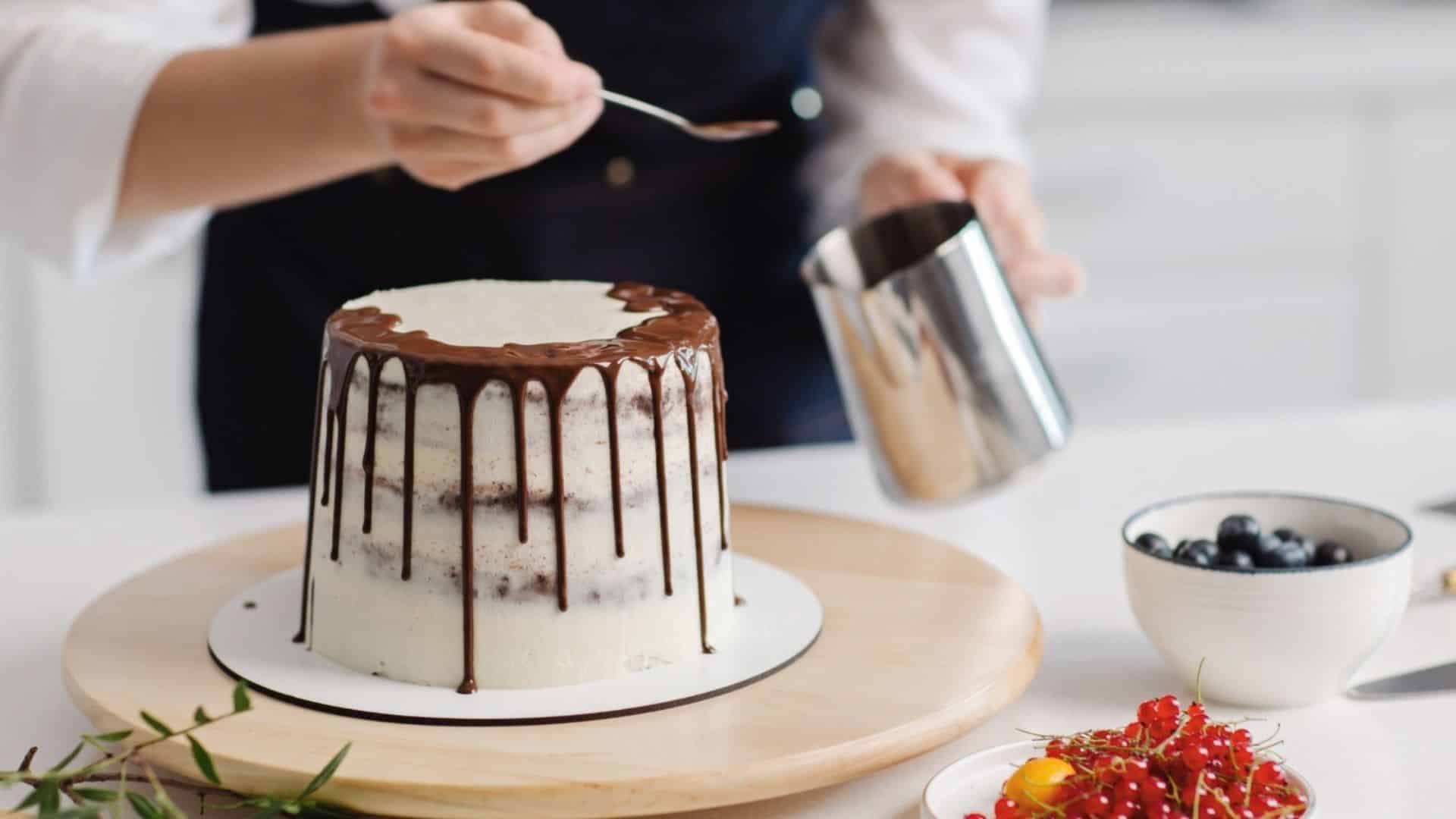Chocolate cake dazzles.
One bite and a tired dining-room suddenly hums yeah-buddy energy.
I wrote this guide for pros who plate desserts night after night and still chase that louder wow.
We’ll dig into science, sourcing, tech, and the eco storm rumbling behind every cocoa bean.
Why Moist Matters
Moist crumb wins repeat customers, simple as that.
Lab trials show increasing cocoa from 15 % to 22 % actually keeps water locked in, because starch is partly displaced by fat-rich cocoa solids, nifty huh. (ScienceDirect)
Texture lives or dies on fat choice.
Butter gifts flavour but oil stays liquid when chilled, so crumb feels softer next day, a tiny miracle for cafés without same-day turnover. (Handle the Heat)
The Butter-Oil Flavor Tango
Chef Lorna Cheng swears by 60 % butter, 40 % grapeseed oil.
She once baked 200 portions for a Tokyo gala; cakes travelled six hours, still plush at service.
Emulsifiers Sneak In
A smidge of soy lecithin 0.4 % of batter stops fat from splitting, saving you from sad greasy bottoms.
Don’t skip it, promise.
Ingredient Selection & Sourcing
Chocolate cake starts in a rainforest, not a mixer.
The global chocolate market will nudge past $140 billion in 2024, so demand ain’t slowing. (Chocolate Affairs Magazine)
Cocoa Ethics in 2025
Fairtrade’s upcoming cocoa dashboard means buyers will stare at supply-chain data in HD.
Smart pastry teams already lock in contracts that pay farmers a living income bonus. (Fairtrade)
Climate chaos, though, is biting.
EU researchers warn 96.5 % of imported cocoa comes from nations under-prepared for climate hits price spikes lurk. (The Guardian)
Flour Protein Dial
Use cake flour for layer cakes; its 8 % protein keeps bite delicate.
Switch to all-purpose only when structure must hold fondant or tall mousse stacks.
Sugar Isn’t Just Sweet
Swap 10 % white sugar for light brown; molasses locks moisture and bumps Maillard aroma.
Little colour shift, big reward.
Technique Deep-Dive
Creaming vs All-In-One
Reverse-creaming coats flour with fat first, restraining gluten and yielding lighter, even layers, says test-kitchen data. (ScheckEats)
But on a slammed dinner service, the all-in-one dump-everything move saves five whole minutes Chef Diego Morales risks it when tickets pile.
Controlled Atmosphere Mixing
Recent study mixed batter under nitrogen and grabbed softer crumb with 12 % less sugar future-leaning idea but hardware pricey. (ScienceDirect)
Temperature Timing
Bake 180 °C for 28 min in convection.
A 2019 comparative study found 180 °C hits the sweet spot for volume and moisture in cocoa-dense cakes. (PubMed Central)
High-Altitude Hacks
Climbing above 1 500 m?
Kick oven temperature up 15 °F and pull sugar back 1 Tbsp per cup, else batter will moon-launch then collapse. (King Arthur Baking, Food Network)
Advanced Flavor Layers
Ganache: The Velvet Coat
Equal-parts 55 % chocolate and cream make a pourable glaze at 35 °C.
Add 2 % glucose syrup for mirror shine that stays sexy under fridge lights.
Fillings That Pop
Try passionfruit-yuzu gel between chocolate sponges, like Chef Marisol Valdez does in Lima.
Acid slices through fat, wakes palate.
Textural Punch-Ins
Feuilletine flakes folded into praline buttercream provide crunch exactly 1.8 seconds after bite enough time for brain to shout oh-snap delight.
Modernist Twists
Siphon batter into paper cups, microwave 40 sec, boom a light chocolate sponge with random tunnels that looks oddly pretty on tasting menus.
Troubleshooting Cheat-Sheet
Cake domes too high?
Oven maybe 10 °C hot or batter under-mixed.
Greasy surface?
You ain’t emulsified; cool butter next round to 19 °C before creaming.
Crumb dense like brownie?
Check leavening date, also verify you didn’t over-swirl ganache into raw batter—seen that sin too often.
Sustainability & Trends
Single-origin storytelling sells slices at double price.
Guests love hearing the beans came from Adufo’s nine-hectare farm in Ghana, harvested under shade trees.
Upcycling cacao pod husk into tea or mulch cuts waste by roughly 700 kg per tonne processed, small cafés can brag about it on menu copy.
Case Study: Atelier Nueve
Pastry Chef Elena Ruiz tracked waste for a month.
Switching to oil-butter mix extended shelf life from 48 h to 72 h, slashing throw-outs 28 %.
Revenue ticked up $1 200 because weekend brunch now sells day-old cake as trifle; zero guests noticed.
Frequently Asked Questions
Is Dutch-process cocoa okay?
Totally, but you must boost acid, maybe 1 tsp espresso powder or 0.5 tsp cream of tartar, else rise sulks.
Can I freeze layers?
Yeh, wrap twice, cool fast, hold -20 °C max three weeks.
Thaw still wrapped to dodge condensation.
Why does my ganache split?
Probably poured cream too hot; keep it under 85 °C, stir from centre outwards.
Key Takeaways & Action Points
- Balance fats—blend butter for flavour and neutral oil for moisture.
- Mind cocoa ethics—secure fair-trade, climate-smart beans before supply jitters bite.
- Master technique—reverse-creaming plus 180 °C bake wins consistent crumb.
- Layer flavours—acidic fruit, textural crunch, shiny ganache wow modern diners.
- Track data—shelf-life metrics turn waste into revenue, as Elena proved.
Go tweak your formula tonight.
Your next chocolate cake can shout louder, taste richer, and maybe help the planet just a tad.









